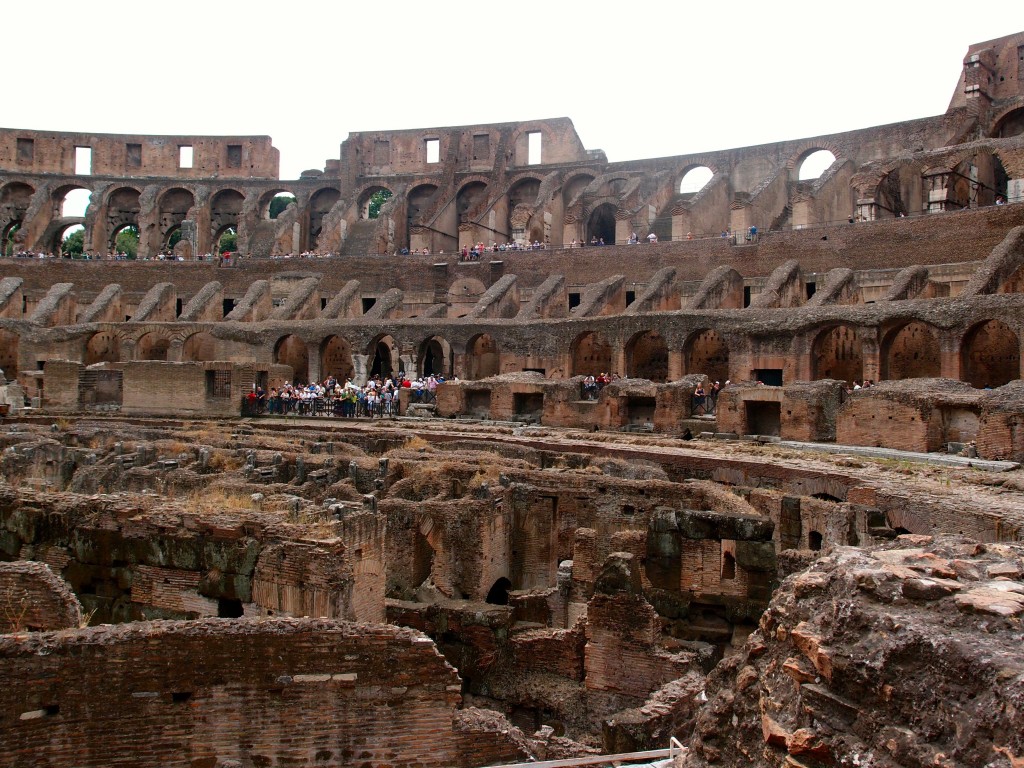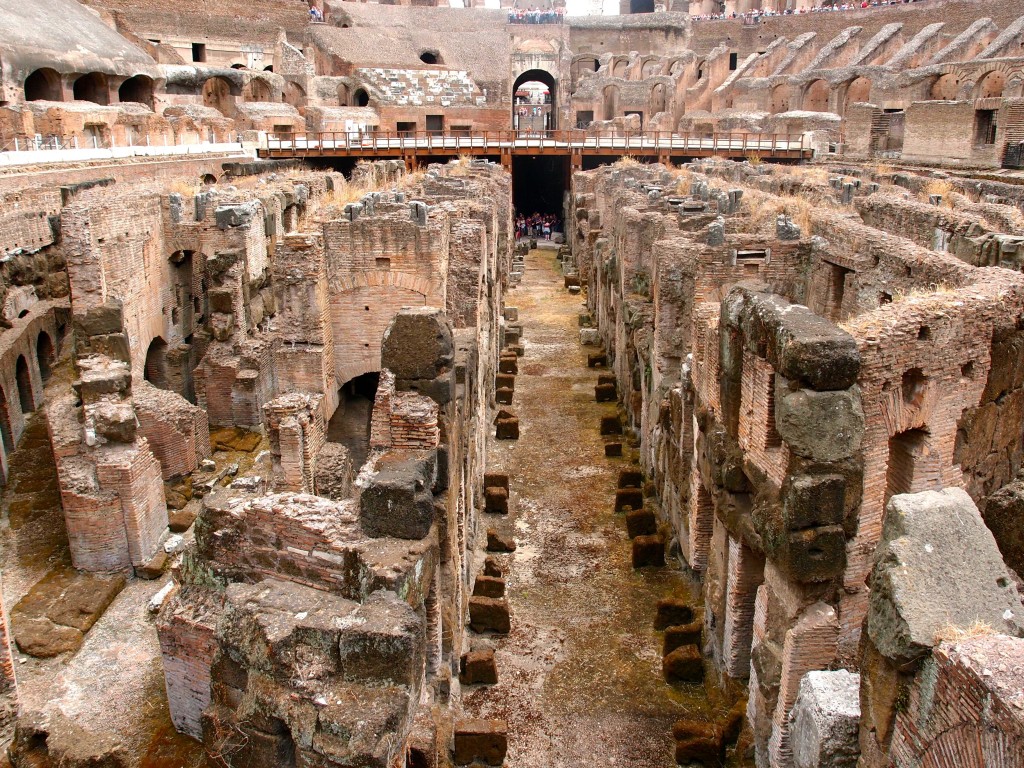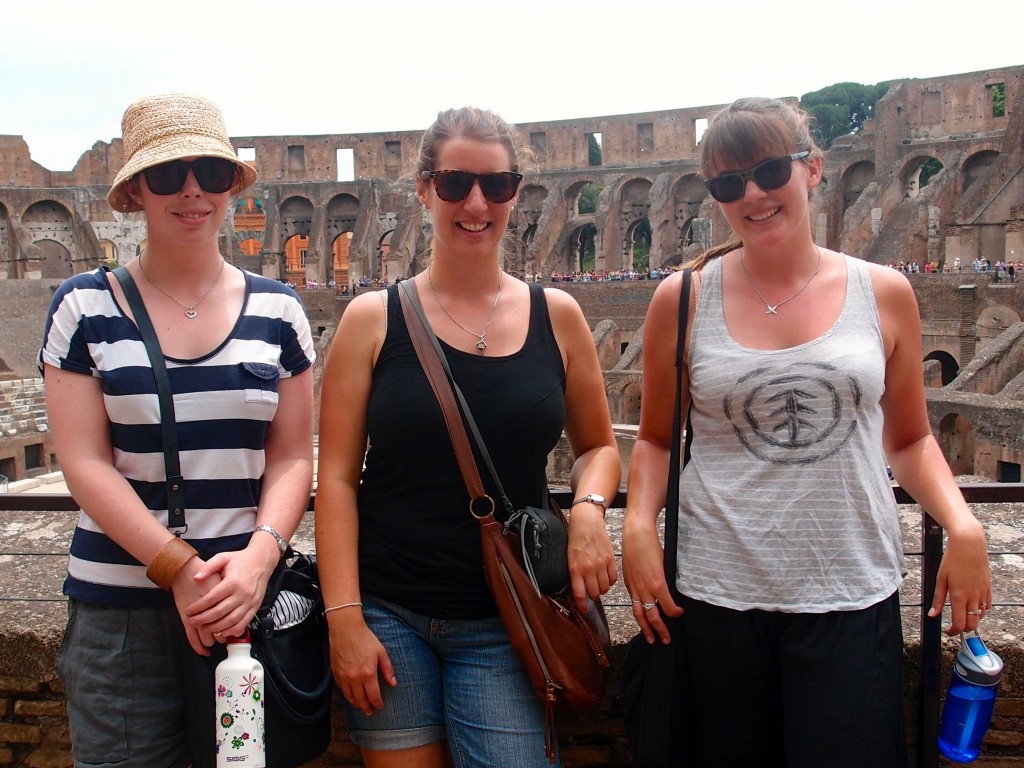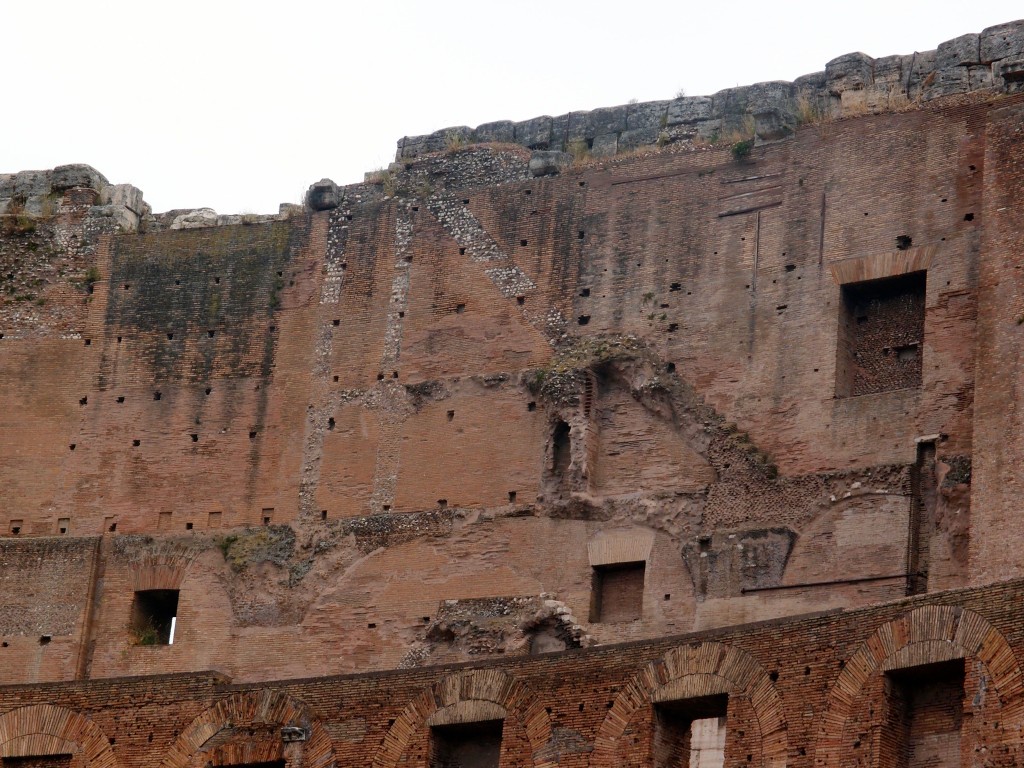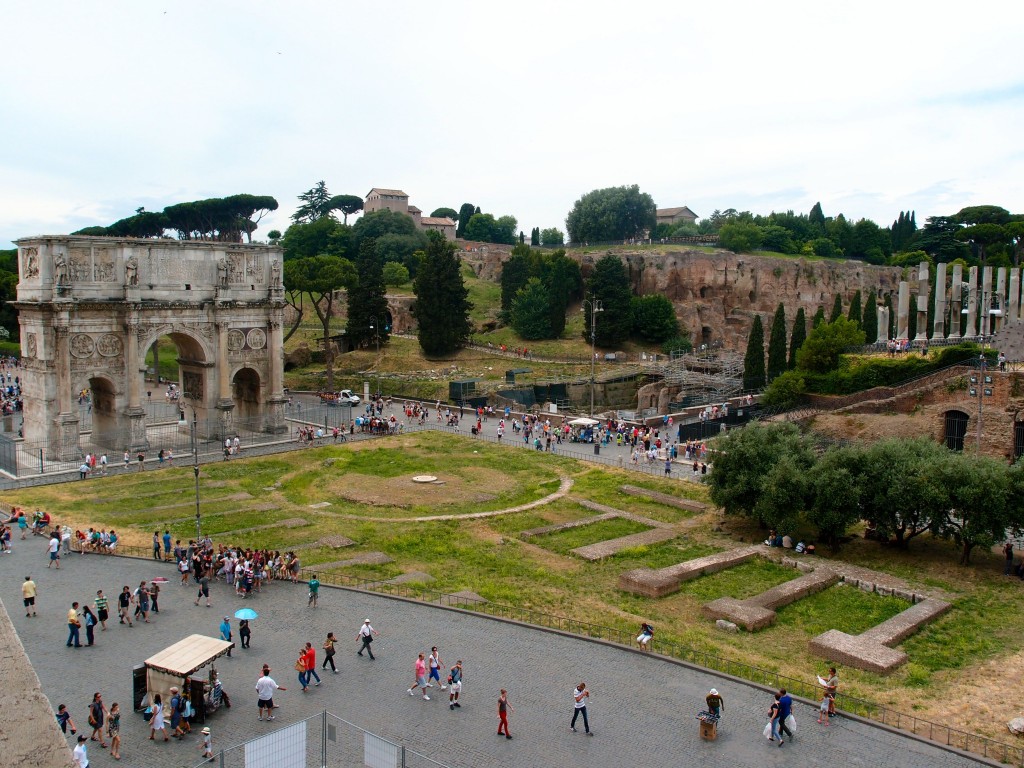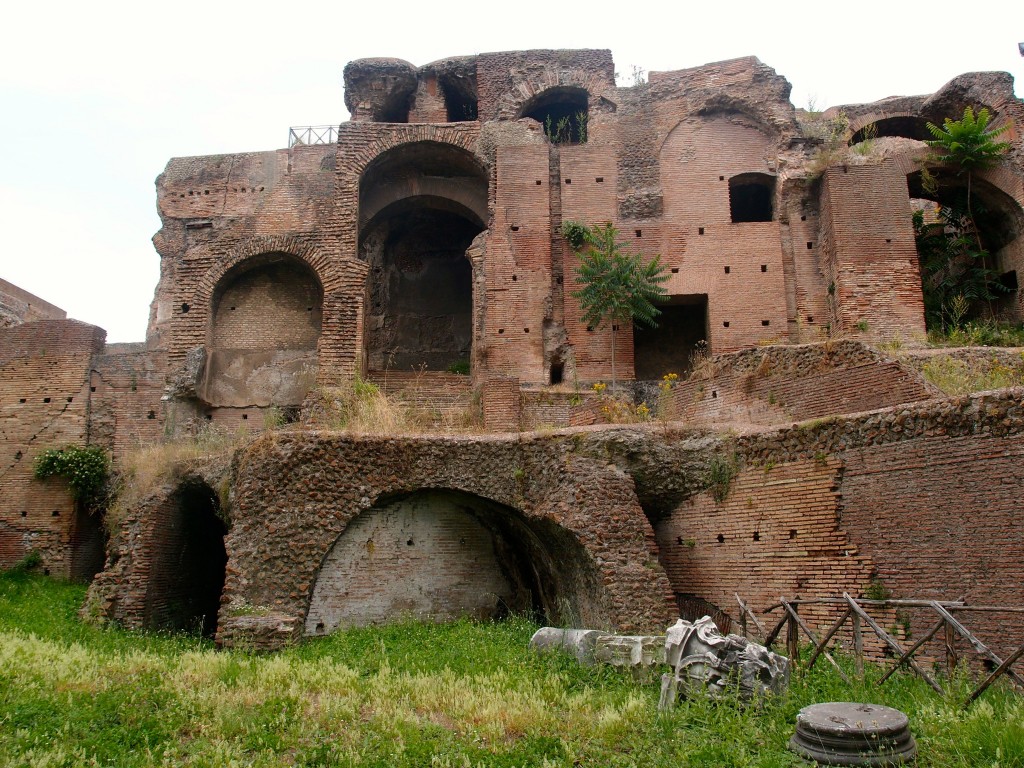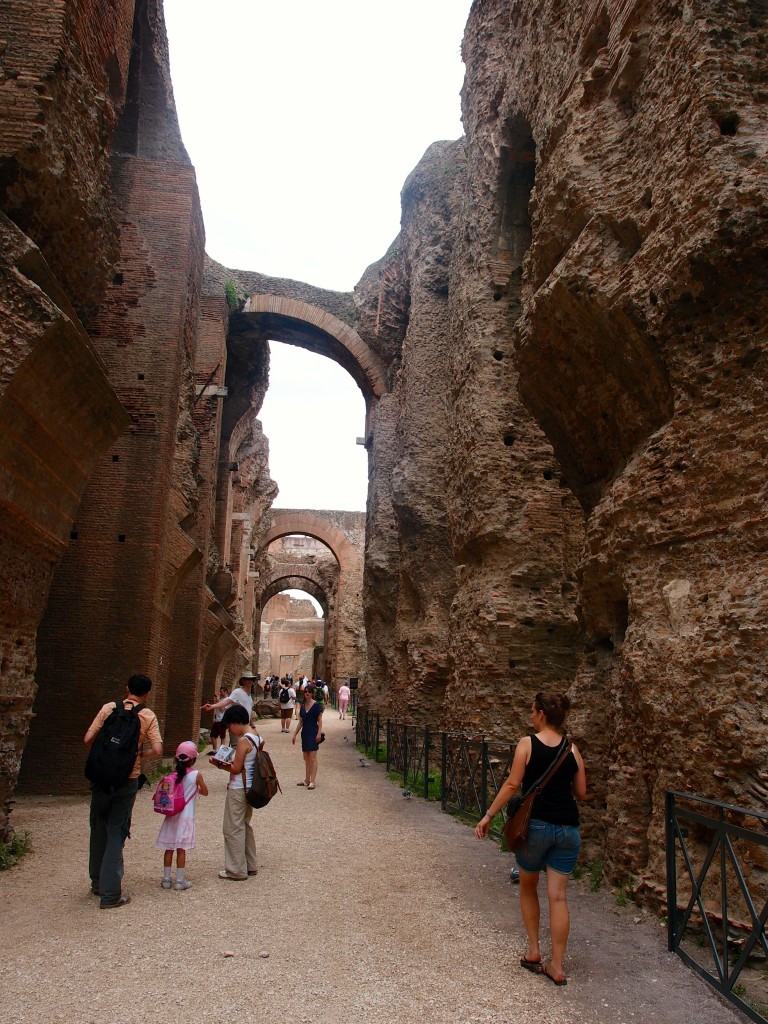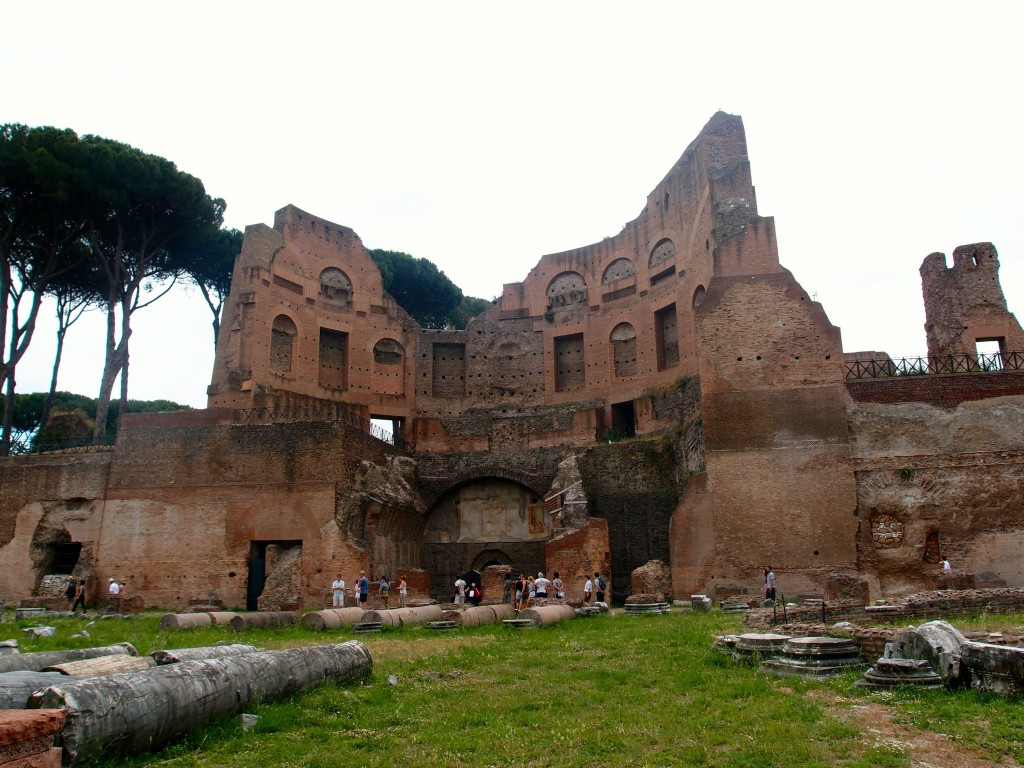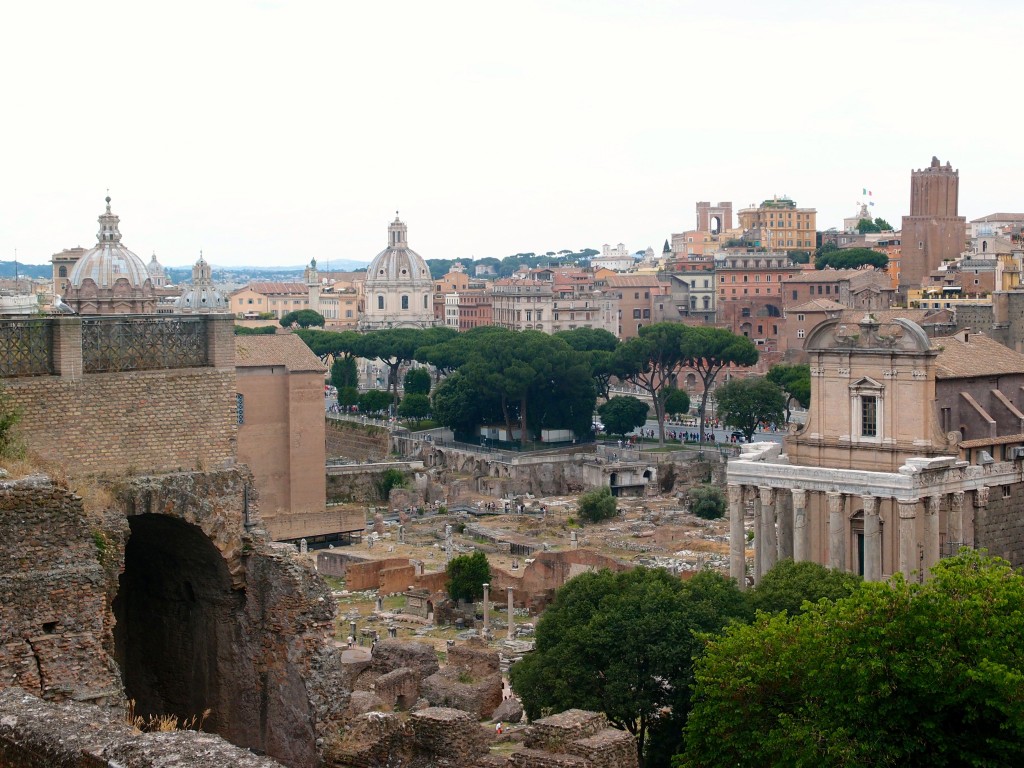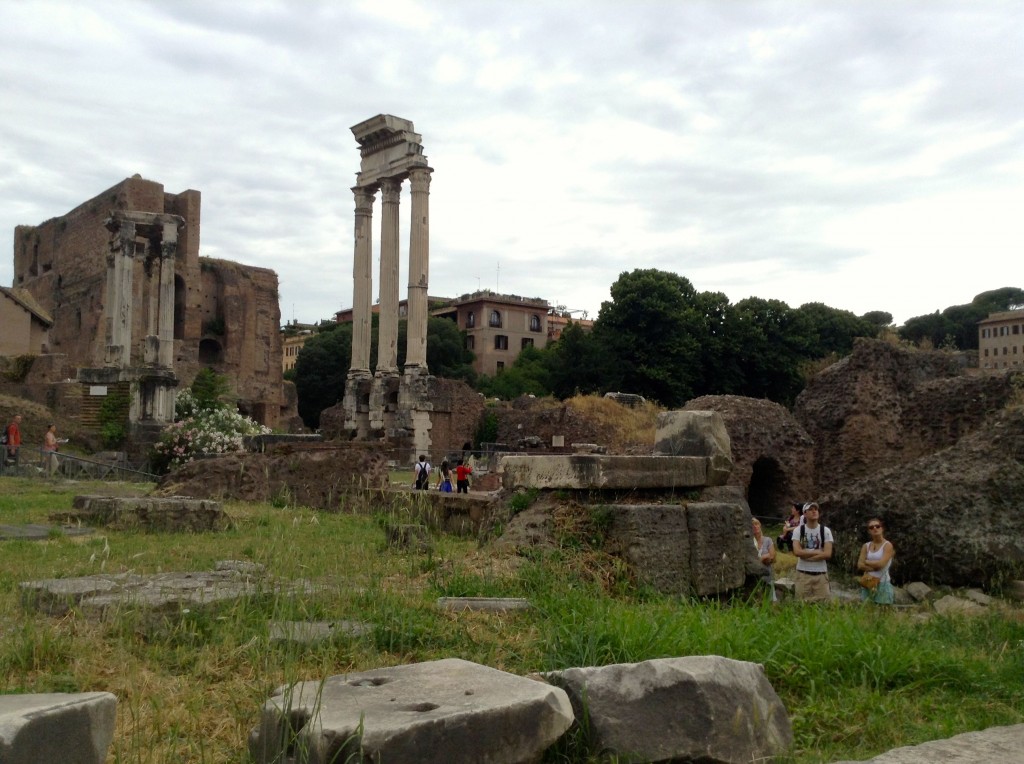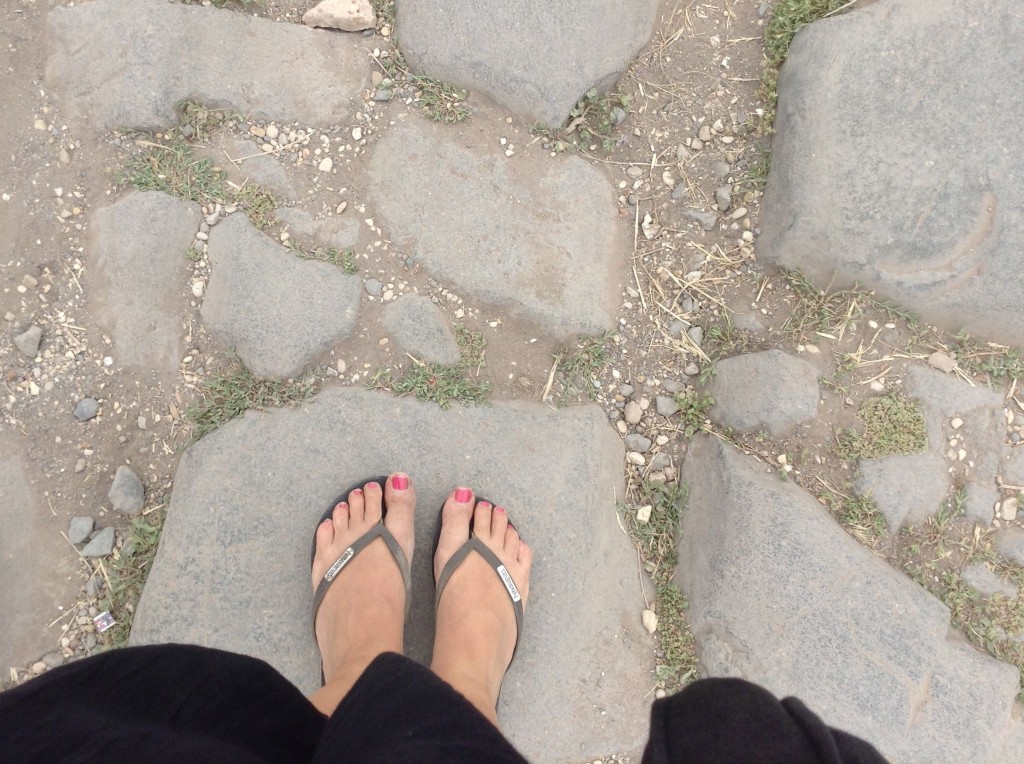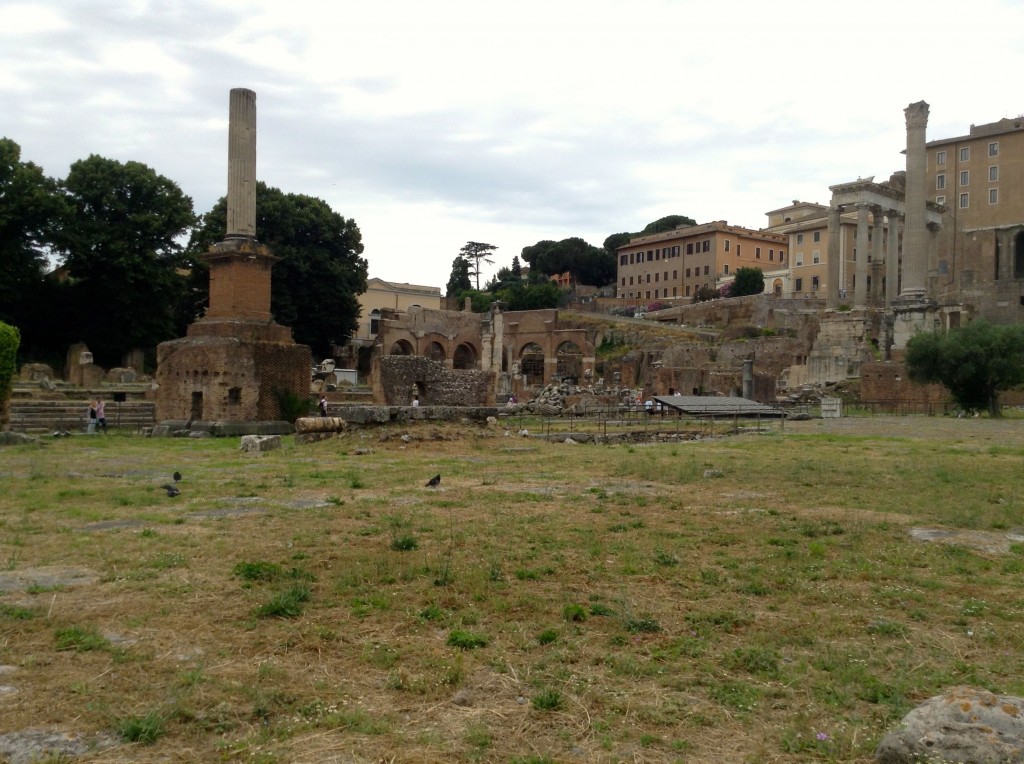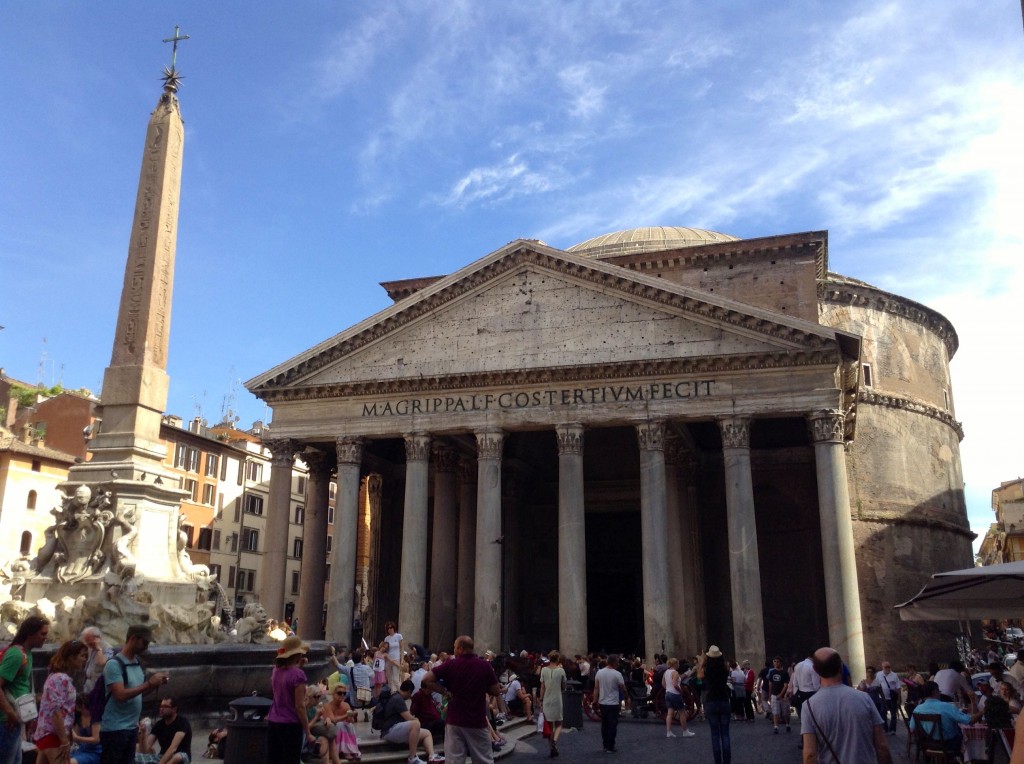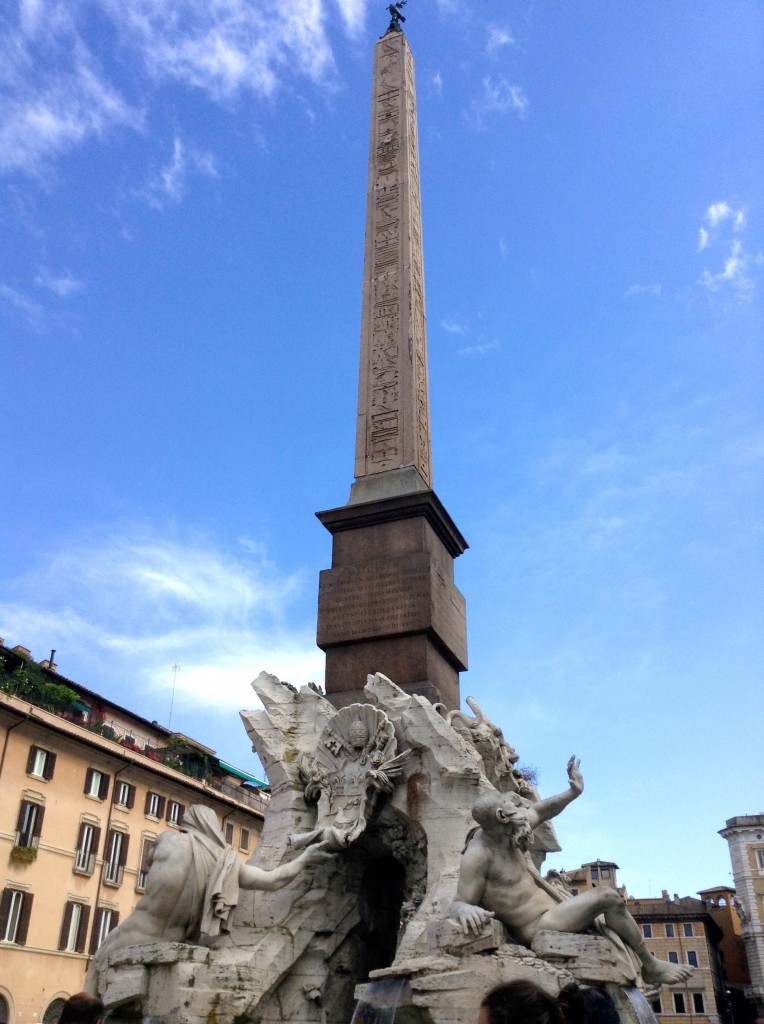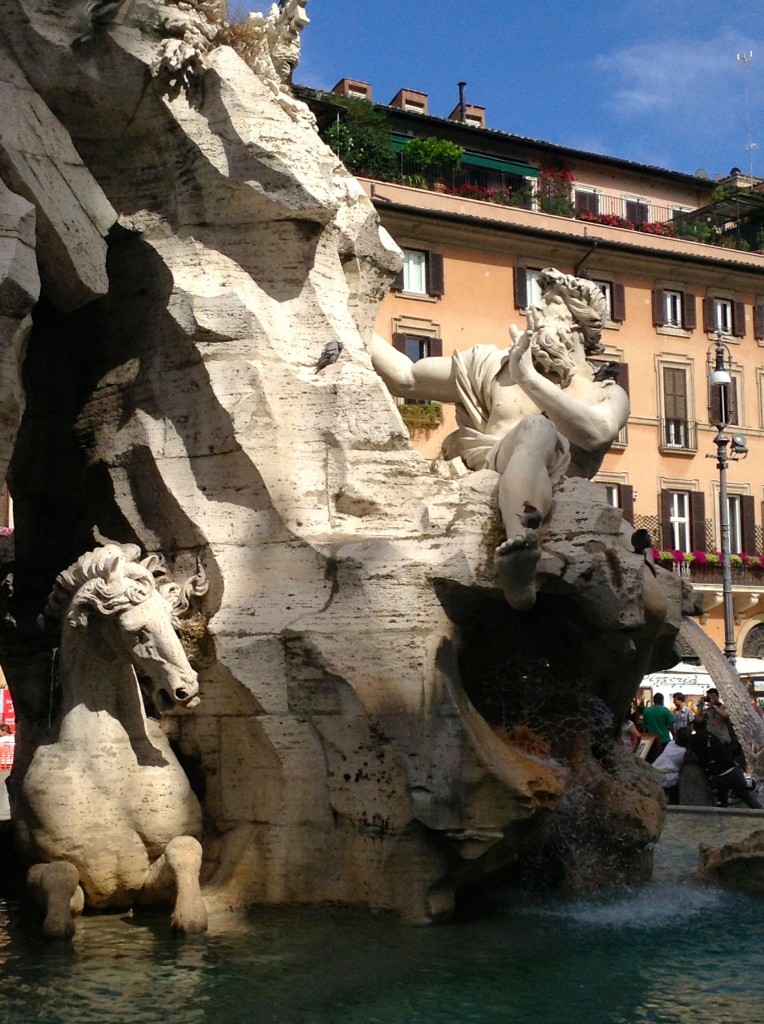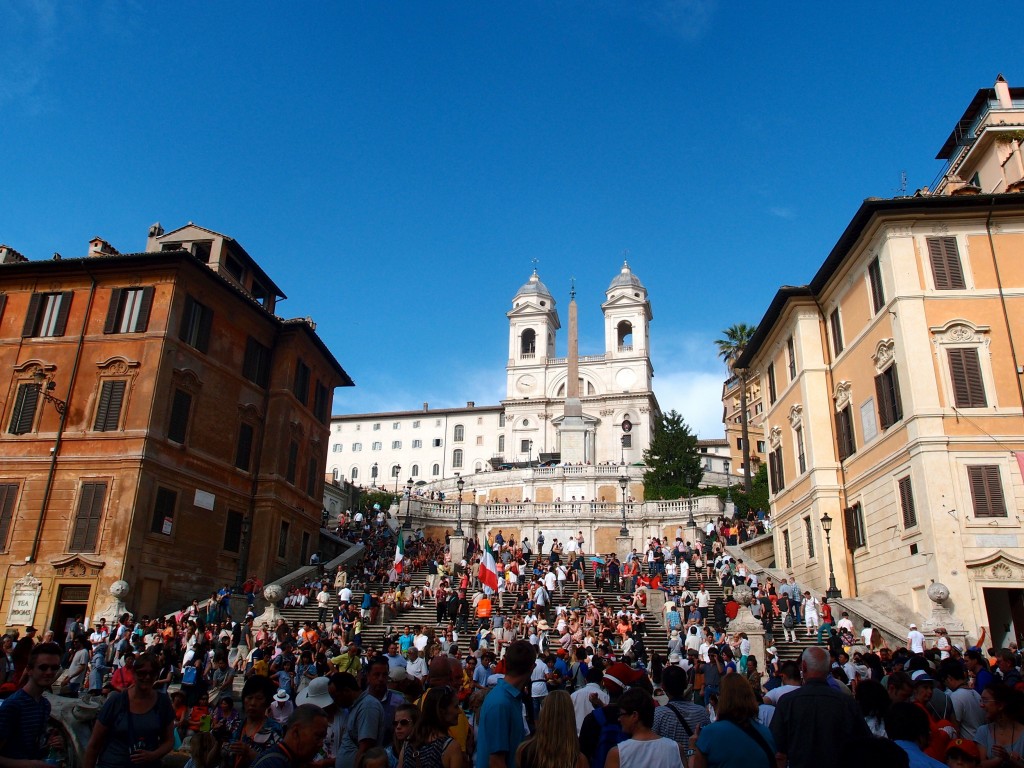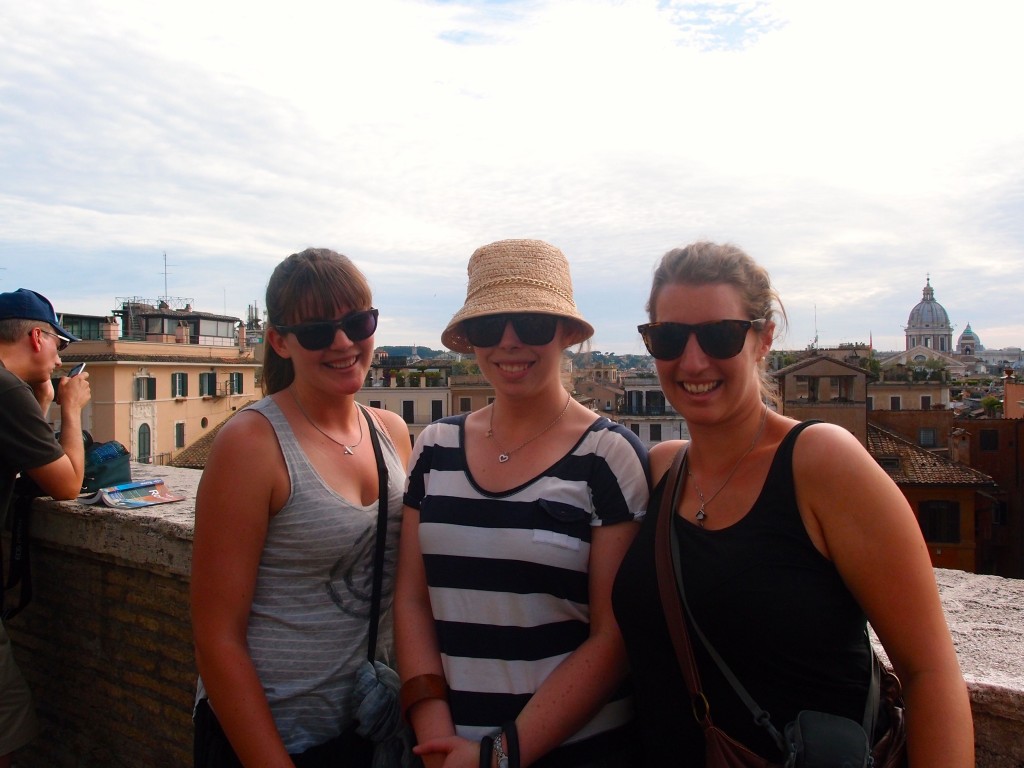Today we decided to visit three of Rome’s biggest attractions, the Colosseum, the Roman Forum, and the Pantheon. As I’ve said before, the Colosseum always amazes me. It is one of those “tourist” spots that, once inside, makes it so easy to peel back the millennia and picture a little of what life would have been like, whether you were a citizen crowding into one of the highest seats, or the emperor surveying the masses from your seat of power.
Now mossy and overgrown, you can look beneath where the wooden floor would have rested, to the two stories of cells, cages and passages that thronged with over a thousand people during a gladiatorial exhibition.
The Colosseum actually enjoyed a relatively short period of around 350 years as the home of the gladiators, despite popular perception. After this, it saw use as the site of a Christian church, a castle, workshops, housing, and multiple renovations by various Popes. This mural dates from around the 17th century and depicts an idealised view of Jerusalem – even showing the Crucifixion in the bottom left corner!
I love how it is still possible to see how the stairs and seating were constructed, all the way to the very top. Apparently the Colosseum could hold between 50,000 and 80,000 spectators, but could be emptied in a matter of minutes thanks to smart design – better than most modern stadia today!
We continued our tour of Ancient Rome at Palatine Hill, once home to the Emperors. Legend has it that this is where the twins Romulus and Remus, founders of Rome, were found, and there is evidence that people have lived here since 1000 BCE.
The views of Rome from the top of the hill were certainly pretty special – definitely fit for an Emperor!
From Palatine Hill we wandered down to the Roman Forum. Home to many of the most important structures of Ancient Roman life, the Forum was more than just a meeting place for the rulers of the Empire. It was a booming marketplace, the site of triumphant processions, and the venue for everything from public speeches to criminal trials.
Our final stop in Ancient Rome was the Pantheon in all its grandeur. It looked stunning in the late afternoon sun. Sadly we didn’t get long to appreciate the inside or to marvel at the oculus, the central opening that leads straight to the sky, as mass was starting – the joys of visiting what is still a functioning church!
We took a leap forward in time in a short wander to Piazza Navona, although it too is linked to Ancient Rome, as it was built on the site of and in the same shape as the first-century Stadium of Domitian. I love the details of Bernini’s central fountain, the Four Rivers, with his depictions of the Nile, the Danube, the Ganges, and the Rio de la Plata.
We headed to the Spanish Steps to enjoy the balmy evening – along with what felt like half of Rome. We also enjoyed our first celebrity sighting, as Meg Ryan glided up the steps in a bustle of paparazzi.
The contrasts between ancient and modern Rome are everywhere, but I love how the pace of the city feels like it never would have changed – it is exhilarating!
